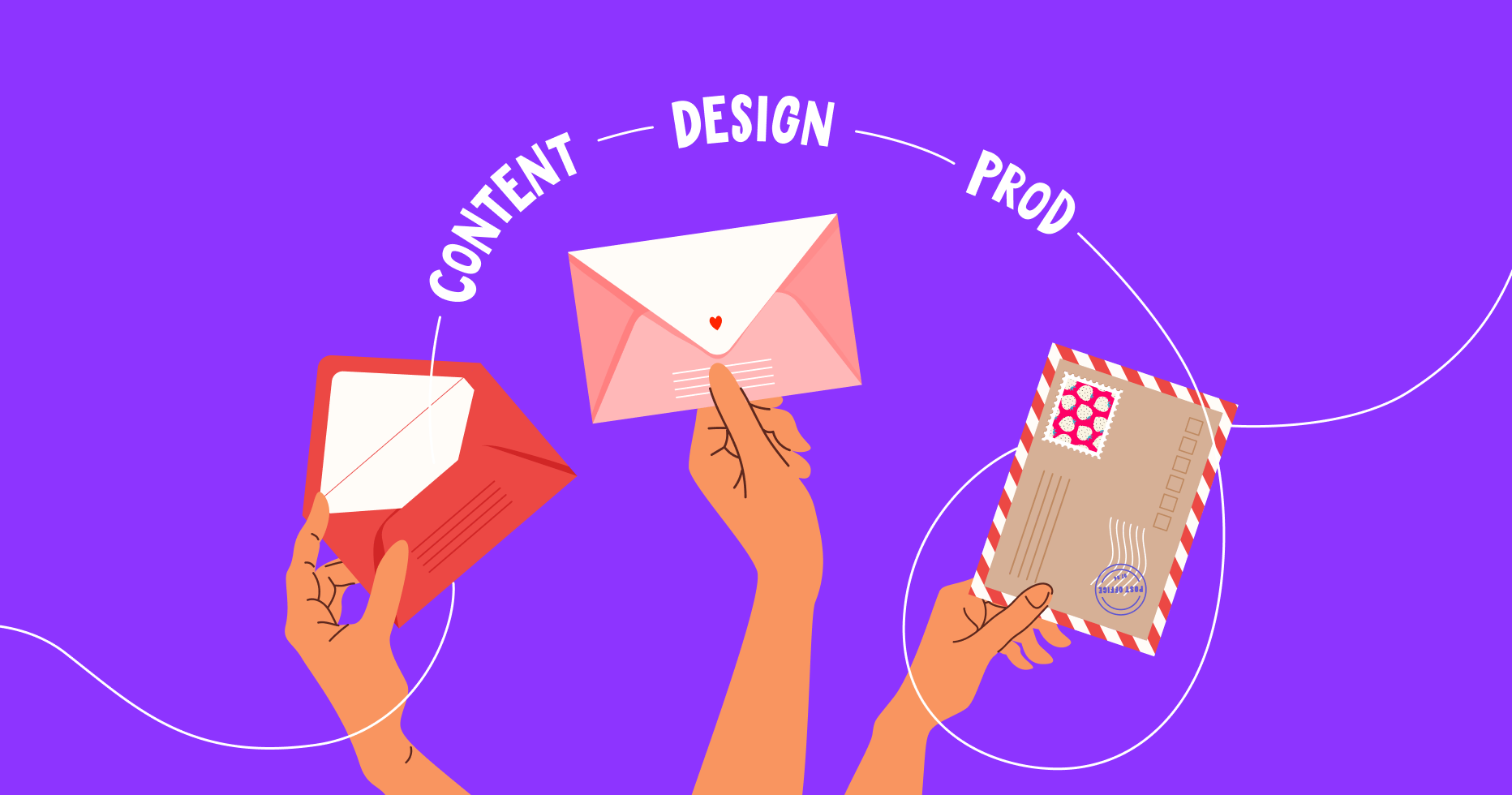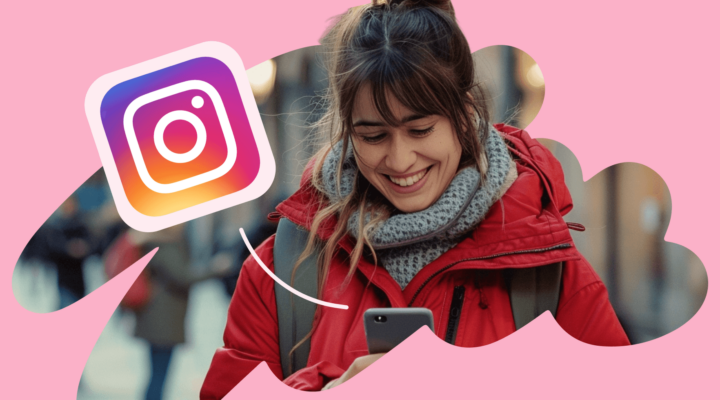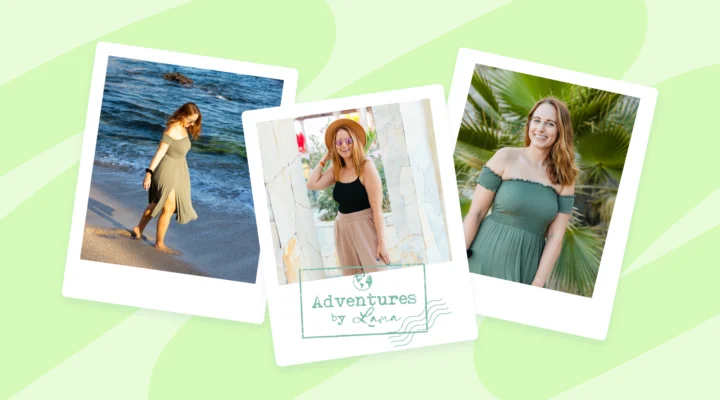Step 1. Figure Out Your Focus
Creating a newsletter simply for the sake of sending a newsletter won’t make your marketing campaign successful. Start by defining the goal you want to achieve, like increasing community engagement, driving conversions, or growing brand awareness. Then, create content accordingly.
Define Your Purpose
First and foremost, determine the results you want to achieve. Here are a few examples of email newsletter goals:
- Gain followers. By regularly sharing relevant and valuable content, you will grow your email list and convert it later into customers.
- Increase community engagement and loyalty. To achieve this, you can send interactive emails that will entice clicks as well as special bonuses, exclusive content, discounts, etc.
- Grow brand awareness. This is a great way to spread the word about your business and share news, offers, or projects.
- Drive conversions. Introduce your best deals that subscribers might like and entice clicks.
- Drive more traffic to your blog. Share blog updates to encourage people to read more of your posts. They might be too busy to check on your blog themselves, but if you send a roundup every now and then, readers won’t miss out on your content.
- Educate readers. Brands also share knowledge and make their followers more cognizant about the industry. It can be how-to guides, video tutorials, online courses, ebooks, etc.
Your newsletter may serve a few purposes, you don’t have to settle for one. Even better, think about creatively combining a few tactics to diversify your newsletter.
Choose Content for Your Newsletter
Once you understand the results you want to produce, the next step is to create relevant content.
Helpful Content
The best way to acquire and retain an audience is to bring value. Consider creating content that will educate your readers, help them solve problems, provide step-by-step instructions, etc.
- How-to guides. Help subscribers out by providing detailed instructions. It’s also a nice way to collect leads. Here are a few examples of guides we share at Travelpayouts:
- Blog posts. That’s a great way to drive traffic to your blog and bring value to the audience. You can either share one post at a time or prepare a roundup with a few articles. For example, HubSpot shares a roundup of the latest posts on a weekly basis:
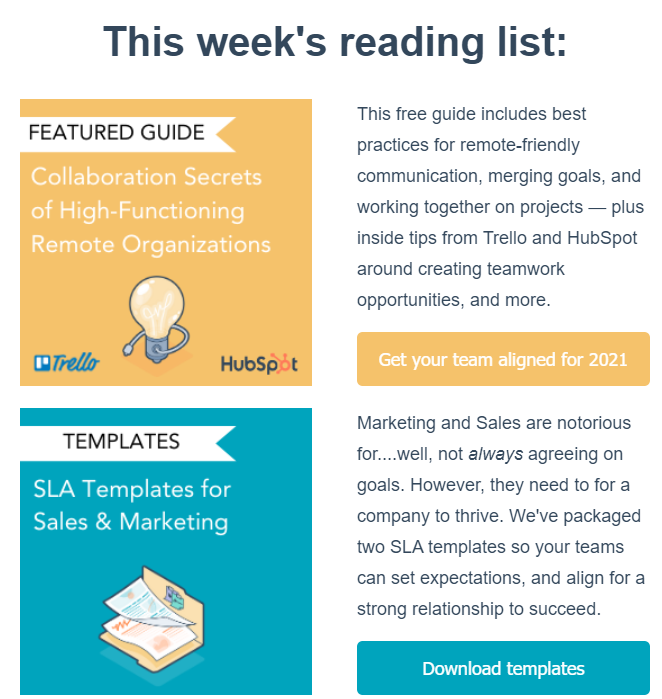
- Interactive content. This can be infographics, video tutorials, webinars, podcasts, etc. For example, at Travelpayouts, we run a YouTube channel to share useful video content and link to it in the newsletter.
Promotional Emails
There is nothing wrong with sharing promotional content every now and then to monetize your newsletter. Research reveals that 60% of consumers prefer to get promotions and updates from a brand by email.
- Product announcements. This is a great way to draw attention to your advertiser’s products. For upcoming offers, it can help create a buzz before launch and drive sales from the very start.
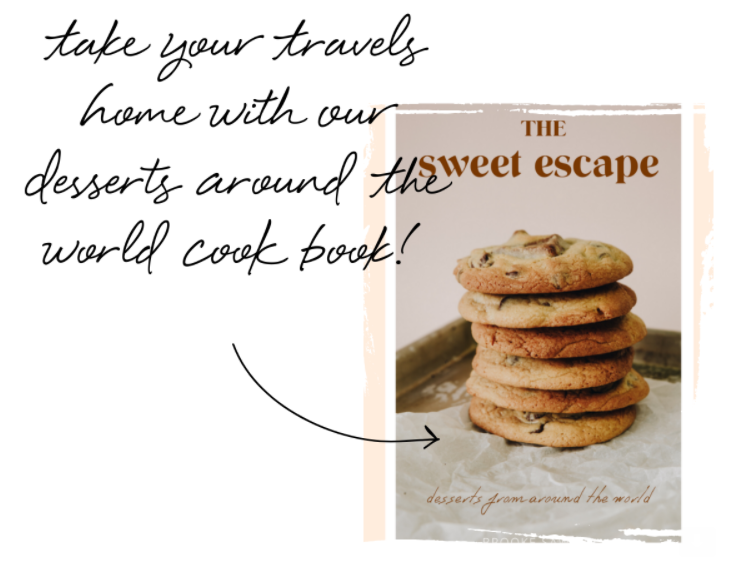
- Special deals and discounts. Who doesn’t like getting discounts or promo codes right to their mailboxes? They are a perfect means to increase conversions and also allow subscribers to feel exclusive if the access to such content is limited.
- Case studies and testimonials. These materials are both helpful for the audience and great for promotion of your offers. Case studies and testimonials can also act as a social proof. The successful experience of other customers will motivate the audience to follow the lead. Here is a case study newsletter from SEMrush:
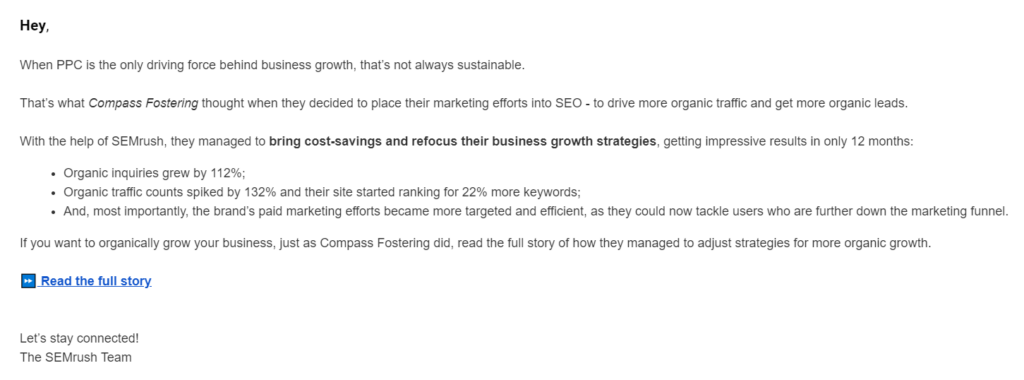
- User-generated content. This can be photos, videos, reviews, and other materials created by users and showcasing your offer. Such content is a great social proof that can help boost conversions.
- Referral programs. Ask subscribers to recommend your brand to a friend or family member and participate in your referral program (or the one of your advertiser). In exchange, offer a discount or some other bonus. Referrals are beneficial for growing your email list and outreach.
Invitational Newsletters
This kind of newsletter is suitable to promote upcoming events like webinars and online meetups that you or advertisers might be running. This can even be a series of emails, for example an invitation to an event followed by a reminder closer to the date and finally, event recap for those who didn’t come.
Below, there is an example of an invitational email to one of Majestic’s webinars.
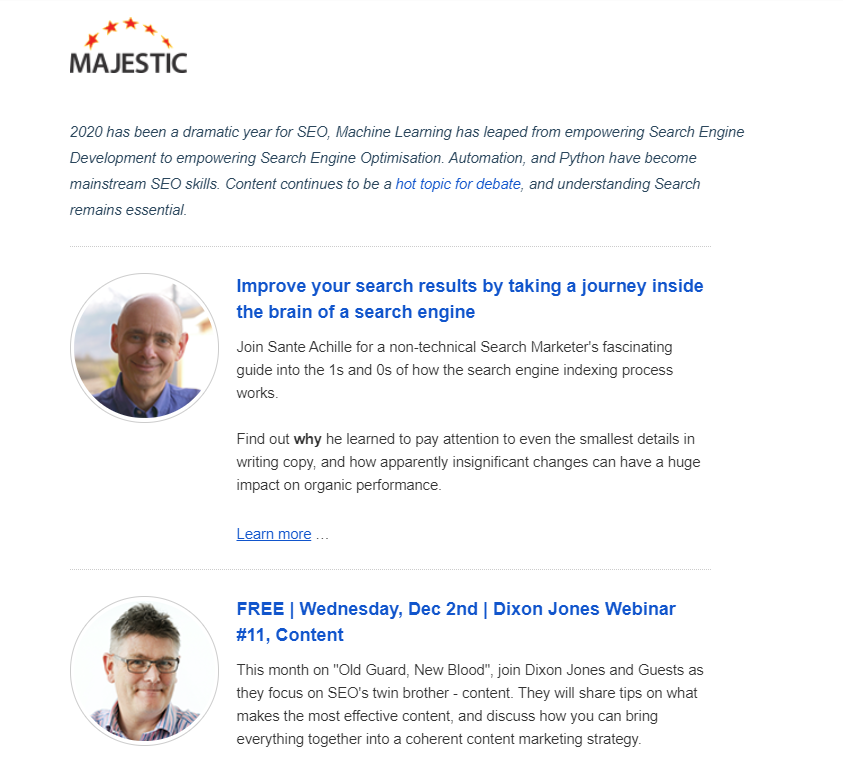
Business Information Emails
Sharing information about your brand can help build trust with the audience and educate it at the same time.
- Your business story. Let readers know about the person behind the wheel and help them connect in a more meaningful fashion. For instance, Coursera shares company statistics and invites readers to join its community.
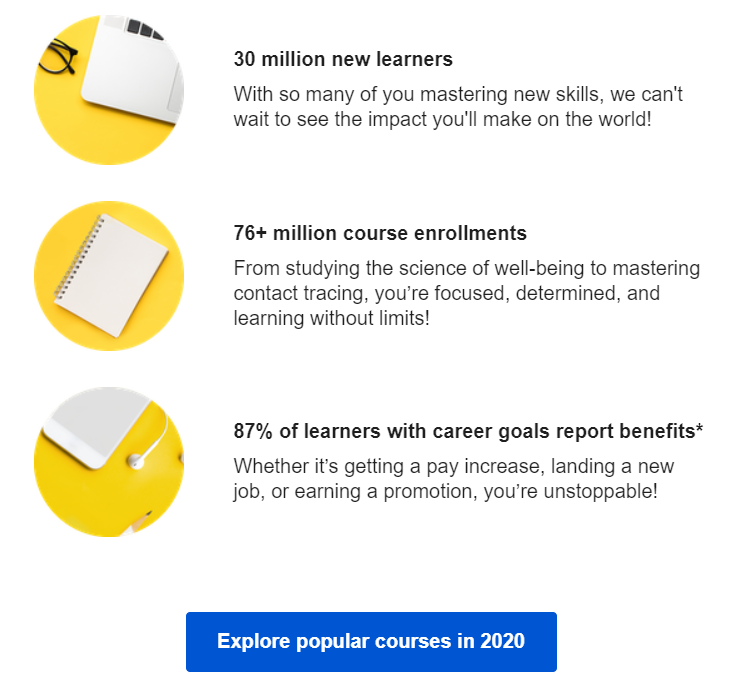
- Behind-the scenes. Give a glimpse of what’s going on behind the scenes in your business. It can be a story with photos and videos, a tour of your business space or of one of the advertisers you promote.
- Job offers. If you’re looking for a writer, photographer, or some other expert, let your audience know. Some of them might have the required experience and could become your newest employee or pass the opportunity to people they know.
- FAQ. Collect the most frequently asked questions about your business and share them in a newsletter. If you don’t know where to start, take a look at the FAQs of your competitors and compile yours similarly.
- Niche updates. Subscribers to your mailing can also be interested to learn about the niche in general, so take advantage of that and share the latest industry updates every now and then. Here, you can segment the audience based on their interests, like preferred travel destinations, etc. and share relevant news for each group.
- Expert interviews. This type of content can also bring real value to subscribers who strive for expert knowledge. For instance, you can share a video with an interview in the newsletter and leave a link to the full transcript or recap on your blog.
Interactive Content
This type of content allows the audience to perform actions and share feedback with you. It’s beneficial to both increasing engagement and learning more about subscribers.
- Surveys. Boost engagement of your community by sharing a poll or a survey. It can cover a variety of topics from types of content they’d like to receive to their last travel experience to opinions on products and services that you promote, and so on.
- Giveaways and contests. This is another awesome way to drive traffic, grow brand recognition, following and its engagement. Depending on your purpose, ask the audience to follow you on social media, tag a friend, share a photo with one of the products you promote, etc.
- Quizzes. You can use any kind of quizzes from serious and educational to fun and interactive. For the best results, make sure the quiz is relevant to your business and brings some use to the audience.
- Greetings. It’s never a bad idea to congratulate followers on special occasions like Christmas, birthdays, etc. You don’t also have to wait for major holidays and can start off with lesser known occasions like National Pizza Day and so on.
- Inspiration. It can be inspirational quotes, videos, photos, interesting facts, etc. Why not bring joy and make your audience smile just to stay in touch?
Step 2. Get Your Email Opened
Keystone to success in email marketing is to get your emails open. In addition to tactics described below, it’s also important to remember about the technical side and warm up your address before sending.
Write a Catchy Subject Line
Subject lines are the first thing that people see in their mailboxes together with the sender’s name. With the tactics below, you can draw subscribers’ attention and increase your open rates.
- Be personal. Personalized subject lines can increase open rates by 50%, as this allows to build rapport with the audience and make them feel special. You can use the recipient’s name, their birthdays, interests, location, and so on.
- Create a sense of urgency. Make subscribers feel that your offer is time-sensitive and encourage more opens for your newsletter. You can create such an effect using words like urgent, important, limited, alert, etc.
- Another great tactic to make subscribers wonder what’s inside your letter is to leave an information gap. For instance, write only a part of the sentence. Or ask a question in the subject line that subscribers would want to know the answer to.
- Address a common concern so users can relate to the email.
- Use power words that stimulate readers’ interest and appeal emotionally, for example, adjectives like amazing, mind-blowing, awesome, blissful, and so on.
Whatever tactic you use, take the time to check the spam score for your text in one of spam checkers like MailTester, Postmark, etc. Thus, you’ll make sure that your subject line doesn’t get in the way of email deliverability.
Make Your Email Personal
Personalization is considered to be the most productive strategy for email communication by 50% of marketers. What’s more, 82% of experts noticed increased open rates after they implemented personalization.
Here are five simple steps that will make each subscriber feel special.
- Segment your audience into several groups based on their data to drive higher conversions. For instance, segment the audience based on their location, interests, web behaviour, preferred mailing frequency, etc. Pay particular attention to the location of your subscribers and try to send out emails at optimal times for each location.
- Build customer personas for each segment. Based on the data acquired in the previous step, try to describe their key traits, behavior, and pain points that you can help solve. Then, prepare content that would appeal to each buyer persona.
- Use dynamic content. It automatically changes depending on user data such as gender, location, behavior, etc. And, it can save you a lot of time changing content manually. So, what can you customize?
- Product recommendations. That’s a great way to show the audience that you take the time to study their needs and provide a customized approach. For example, you can send how-to guides for specific destinations that your users would like or make a compilation of offers from advertisers based on their purchase history, etc.
- Images. Customize every image for newsletter design to match the location of users to increase click-through rate by 29%.
- Content. Just like with offers and images, you can customize email content, for instance, recommend blog posts or send other types of newsletters based on what subscribers found interesting the last time.
- Add recipient’s first name. Address the recipient by name in the subject line and increase open rates by 26%.
- Personalize your business. Send emails directly from your team members to establish human connection between you and subscribers.
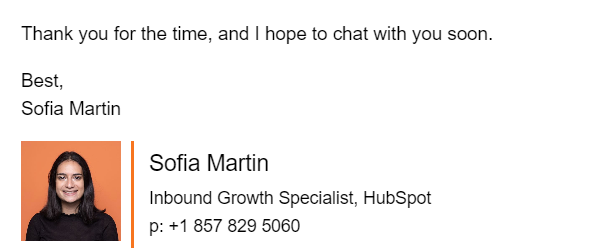
Now, how can you collect user data for email marketing campaigns?
- Signup forms. While forms with less fields capture the most leads, you can add one or two extra questions to collect user data such as geolocation or age group.
- Confirmation letter. When asking users to confirm subscription, you can also take this occasion and learn their preferences.
- Integrations. Many email marketing tools allow you to import a lot of user data such as their names, emails, location, etc. Some of them, like RightMessage, allow you to show pop-ups and ask visitors questions right on your website, as Pat Flyn does on his blog:
- Behavior tracking. Collect behavioral data about your customers such as their preferences, actions on your site, etc. and then send relevant content. For instance, if a user was interested in a particular destination, you can create a newsletter with more content on that tourist spot or share relevant offers and special deals.
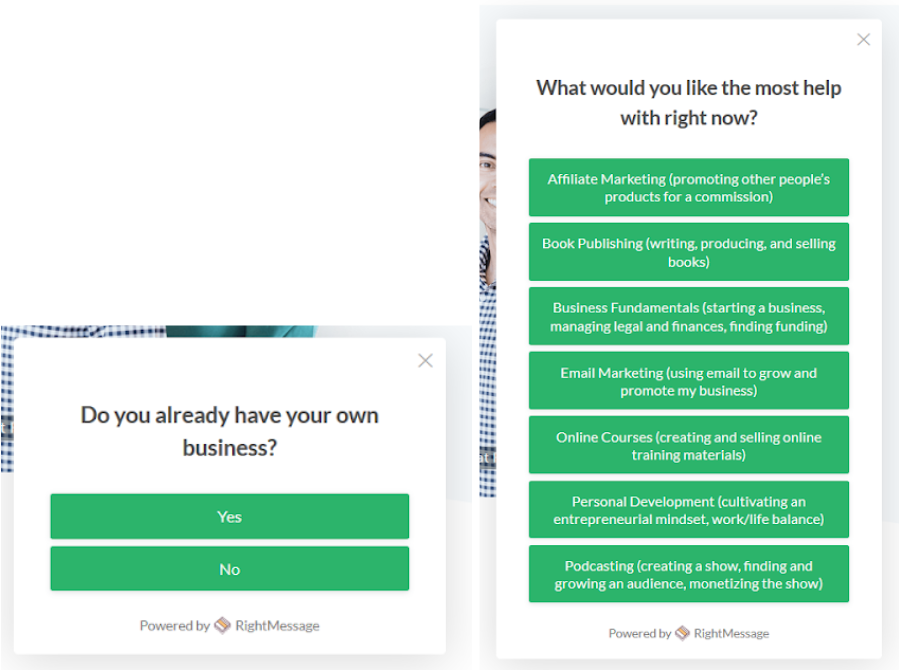
Choose the Best Timing
Timing may influence your email marketing campaign no less than subject lines or relevance of content. Thus, open and click-through rates are impacted a lot by the time of the day and day of the week. For example, 10 a.m and 8 p.m. are considered the best time to connect with subscribers, while Tuesday and Wednesday are found to be the most opportune days for mailing. If you target a global audience, consider time zones of subscribers and reach out to them accordingly.
Step 3. Pick the Perfect Email Template
Before you start crafting an actual email, it’s very important to choose the right template and strategize from there. Focus on the best layout for your newsletter, and colors and imagery can be easily edited afterwards.
While templates for email newsletters are customizable, they are usually designed with a particular type of content in mind. Thus, for a post roundup, the template should allow you to include various posts and mix text with images, like the template below by Colorlib.
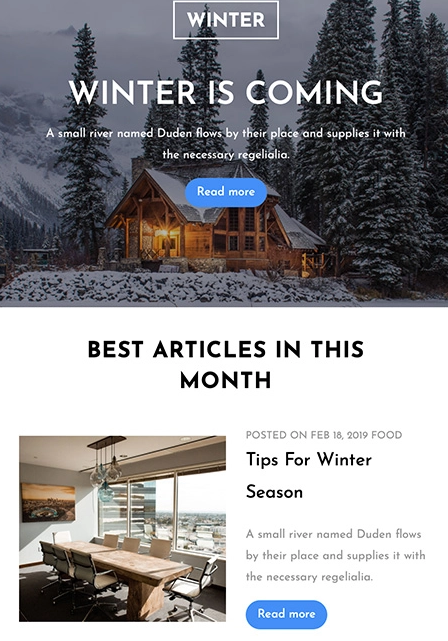
A promotional email doesn’t need multiple sections as you want to highlight a particular offer, but an opportunity to add visuals is crucial. A confirmation email needs even less elements, as it aims to simply confirm the user’s email.
Another question is whether to use a ready-made template or go with a custom-made one. At first, using ready-made layouts saves a lot of time, as you don’t need to worry about it too much, and is also beneficial for last-minute email campaigns. You can get such templates for free or for a small fee with most marketing tools. Custom-made templates allow you to voice your brand identity and add an exclusive touch to stand out from the competition. To understand what kind of template you might need, check on your competitors. Take a look at what templates they are using to see ongoing trends.
Step 4. Write Newsletter Text
Once you define the purpose of your newsletter and choose content and layout, it’s time to write the text.
Write a Compelling Opening Line
The first thing that users see when clicking your email is the opening line. While some of them might not notice the subject line, they won’t miss the opening line. What’s more, users can often see part of the message right in the mailbox, without opening an email, so it’s likely to be noticed.
So, what should you use this line for? The goal is to catch the user’s attention. For starters, you can address them by name when possible, like Melissa from A Broken Backpack.
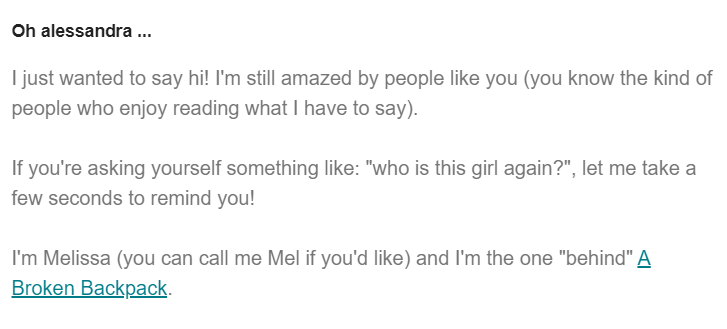
Try also to get to the point right from the beginning, so that users can see what the letter is about and relate. By doing so, you’ll respect your readers’ time.
Stay Relevant
It’s important to stay relevant in the email body as well as throughout all the newsletters. When users subscribe to a newsletter, they have certain expectations from it, as you describe its content. Thus, to grow the audience, you’d better keep to the content and mailing frequency as promised. Try not to take advantage of getting people’s emails and flooding them with irrelevant content.
Some bloggers let users decide what kind of content they want to get and how often they want to get it, thus making their mailing more efficient from the very start. In this case, you won’t have to worry about your newsletter being irrelevant. While it demands much more time to prepare a few emails for each group of users, it increases your conversion rates significantly.
Choose the Tone for Your Newsletter
The tone is how you sound to your subscribers, and it serves many purposes: voicing your brand identity, connecting with readers, establishing authority, etc. You can change it a bit depending on each email’s purpose. Anyway, the right tone pulls the reader in, and here are a few ideas on how to make it work. As an email is a more intimate form of writing than blog posts or guides, it’s ok to be informal. For example, address subscribers as you’d do with your best friend, just like Kristin from Be My Travel Muse.

To make it sound conversational, you can ask questions and express emotions, as you’d do in a real talk. Why also not share a personal story to make subscribers feel close and up-to-date with your schedule? Here is an example from Adventurous Kate:
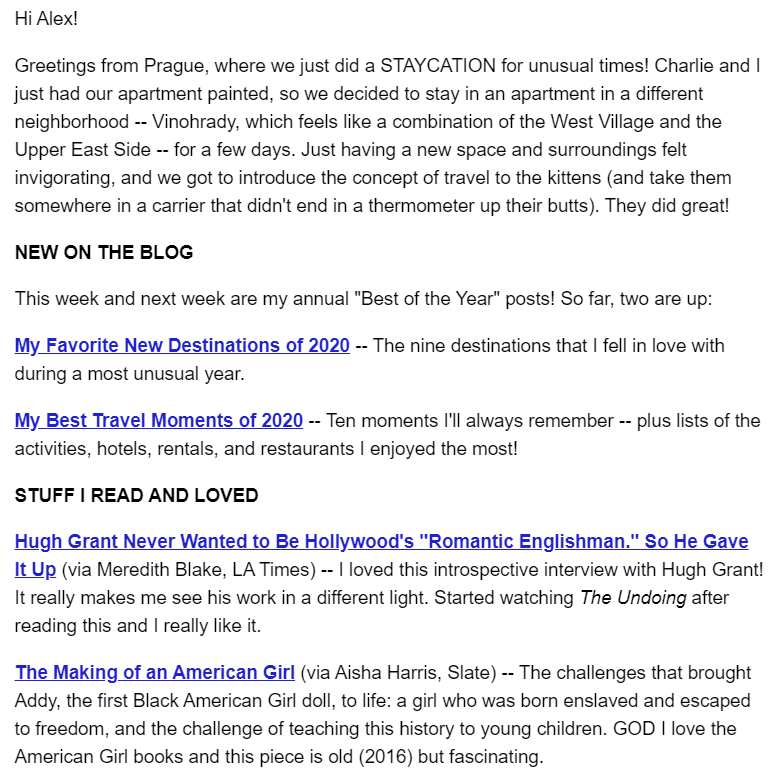
Add Visuals
While some bloggers send newsletters with plain text, adding imagery always helps draw attention and spice things up. Subscribers might not read every word of your email, but they’ll for sure look at visuals, so adding them increases the chances of your email resonating with the audience. Here is an example from the World of Wanderlust newsletter:

If you share facts and stats, adding visuals can make the email more readable. Take advantage of infographic tools and create stunning pictures that will help educate subscribers. However, adding imagery can increase the size of email newsletters, so make sure to test it before sending.
Write a Persuasive Closing
Closing is the point where subscribers decide whether they want to stay with you and proceed further. Here, it’s important to weave relevant calls to action: checking out an offer, downloading a guide, signing up for a course, etc. Make it crystal clear what you expect from users to drive clicks. It’s good practice to add a CTA button of contrasting color that won’t go unnoticed. Here is an example from Make a Living Writing.
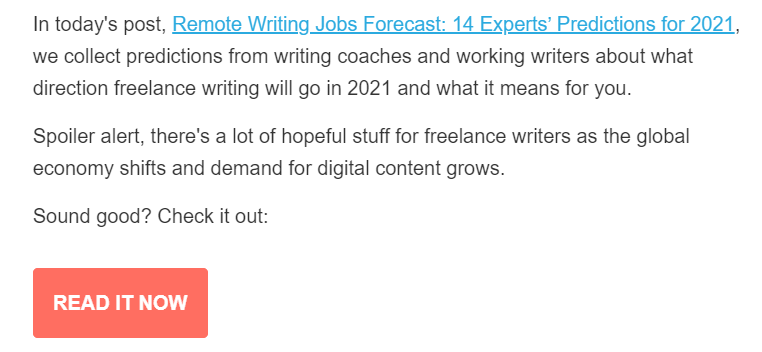
Over to You
Now that you know how to make the best of email marketing, it’s time to put that knowledge into practice. Identify your objectives and create an email newsletter that will serve that purpose. To make your message powerful, write compelling subject and opening lines, share visuals, choose the right layout and add personal touch to make every user feel special. Before sending, make sure to test email newsletters to increase their deliverability.

